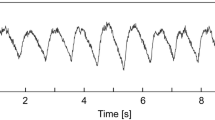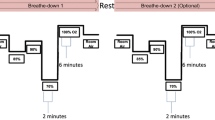Abstract
Videoplethysmography (VPG) has been studied for more than a decade and recently found useful as a tool for touchless measurement of the human pulse. The principle of measurement lies in subtle changes of skin color due to filling of subcutaneous capillary vessels with blood and emptying in the rhythm of pulse. Most authors assume the measurement video footage is taken at the face or forehead due to good perfusion, dense capillary network, most fragile skin and good visibility in most humans. However, a setup requiring the subject facing to the camera is impractical and we found interesting to explore how the accuracy of the method degrades with moving the area of observation to other uncovered parts of the body. In this paper we compared the VPG from three simultaneously captured video tracks and the ECG-based reference beat recorder as sources of the pulse information. The principal finding is that consistency between VPG pulse measurements made at the forehead, cheek and interclavicular region is high (1.28 bpm), despite occasional high absolute error (up to 3.9 bpm). The reliability of the VPG measurement is the highest at the forehead and drops in other regions without affecting the measurement accuracy.
Access this chapter
Tax calculation will be finalised at checkout
Purchases are for personal use only
Similar content being viewed by others
References
Mestha, L.K., Kyal, S., Xu, B., Lewis, L.E., Kumar, V.: Towards continuous monitoring of pulse rate in neonatal intensive care unit with a webcam. In: 36th Annual International Conference of the IEEE Engineering in Medicine and Biology Society (EMBC), pp. 3817−3820 (2014)
Verkruysse, W., Svaasand, L.O., Nelson, J.S.: Remote plethysmographic imaging using ambient light. Opt. Express 16(26), 21434–21445 (2008)
Poh, M.Z., McDuff, D.J., Picard, R.W.: Non-contact, automated cardiac pulse measurements using video imaging and blind source separation. Opt. Express 18(10), 10762–10774 (2010)
Poh, M.-Z., McDuff, D.J., Picard, R.W.: Advancements in noncontact, multiparameter physiological measurements using a webcam. IEEE Trans. Biomed. Eng. 58(1), 7–11 (2011)
McDuff, D., Gontarek, S., Picard, R.W.: Remote detection of photoplethysmographic systolic and diastolic peaks using a digital camera. IEEE Trans. Biomed. Eng. 61(12), 2948–2954 (2014)
Przybylo, J., Kantoch, E., Jablonski, M., Augustyniak, P.: Distant measurement of plethysmographic signal in various lighting conditions using configurable frame-rate camera. Metrol. Meas. Syst. 23(4), 579–592 (2016)
Krolak, A.: Influence of skin tone on efficiency of vision-based heart rate estimation. In: Augustyniak, P., Maniewski, R., Tadeusiewicz, R. (eds.) Recent Developments and Achievements in Biocybernetics and Biomedical Engineering, Proceedings of the 20-th Polish Conference on Biocybernetics and Biomedical Engineering. Advances in Intelligent Systems Computing, pp. 44–56. Springer International Publishing AG, Cham (2017)
Wang, W., den Brinker, A.C., Stuijk, S., de Haan, G.: Robust heart rate from fitness videos. Physiol. Meas. 38(6), 1023–1044 (2017)
Trawinski, Z.: Two-point method for arterial local pulse wave velocity measurement by means of ultrasonic RF signal processing. Arch. Acoust. 35(1). https://doi.org/10.2478/v10168-010-0001-9
Przybylo, J., Jablonski, M., Kantoch, E., Augustyniak, P.: Distant pulse measurement system for real-time surveillance applications. In: Computing in Cardiology 2017, vol. 44 (2017). https://doi.org/10.22489/cinc.2017.073-212
Acknowledgment
Research supported by the AGH University of Science and Technology in year 2019 from the subvention granted by the Polish Ministry of Science and Higher Education.
Author information
Authors and Affiliations
Corresponding author
Editor information
Editors and Affiliations
Rights and permissions
Copyright information
© 2020 Springer Nature Switzerland AG
About this paper
Cite this paper
Mędrala, R., Augustyniak, P. (2020). Taking Videoplethysmographic Measurements at Alternative Parts of the Body – Pilot Study. In: Korbicz, J., Maniewski, R., Patan, K., Kowal, M. (eds) Current Trends in Biomedical Engineering and Bioimages Analysis. PCBEE 2019. Advances in Intelligent Systems and Computing, vol 1033. Springer, Cham. https://doi.org/10.1007/978-3-030-29885-2_17
Download citation
DOI: https://doi.org/10.1007/978-3-030-29885-2_17
Published:
Publisher Name: Springer, Cham
Print ISBN: 978-3-030-29884-5
Online ISBN: 978-3-030-29885-2
eBook Packages: EngineeringEngineering (R0)




